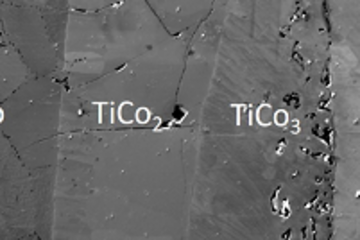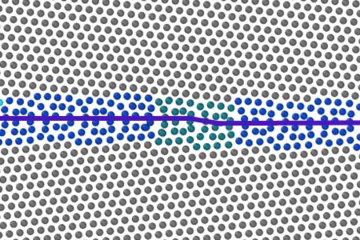All genres
381.
Talk
Relaxed grain cluster (RGC) scheme for polycrystals: Model formulation and solution strategy. Computational Mechanics of Polycrystals (CMCn) Workshop 2010, Bad Honnef, Germany (2010)
382.
Talk
A non-local crystal plasticity model based on polar dislocation densities. 16th Int. Symp. on Plasticity and Its Current Applications, St. Kitts, St. Federation of Saint Kitts and Nevis (2010)
383.
Talk
Coarse-graining of polycrystal plasticity with the Relaxed Grain Cluster scheme. Seminar des Instituts für Technische Mechanik, Karlsruher Institut für Technologie, Karlsruhe, Germany (2009)
384.
Talk
Concepts for integrating non-local crystal plasticity models with damage nucleation at grain boundaries. Materials Science & Technology 2009 Conference, Pittsburgh, PA, USA (2009)
385.
Talk
Crystal plasticity analysis of nanoindentation in intermetallic gamma-TiAl. Nanomechanical Testing in Materials Research and Development, Barga, Italy (2009)
386.
Talk
On the calculation of the geometrically necessary dislocation density in crystal plasticity FEM models. 1st International Conference on Material Modelling (ICMM 1), Dortmund, Germany (2009)
387.
Talk
Application of the relaxed grain cluster homogenization scheme to deep drawing simulation of dual-phase steel. 1st International Conference on Material Modelling (ICMM 1), Dortmund, Germany (2009)
388.
Talk
Crystal plasticity modeling for property extraction and the microstructure properties relation of intermetallic -TiAl nased alloys. 1st International Conference on Material Modelling (ICMM 1), Dortmund, Germany (2009)
389.
Talk
Processing of dual-phase steel for automotive applications: Microstructure and texture evolution during annealing and numerical simulation by cellular automata. Euromat 2009 (European Congress and Exhibition on Advanced Materials and Processes), Glasgow, UK (2009)
390.
Talk
Analysis of the relaxed grain cluster polycrystal homogenization scheme in texture prediction. 15th International Conference on the Strength of Materials (ICSMA-15), Dresden, Germany (2009)
391.
Talk
Crystal plasticity finite element study on small scale plasticity of micropillars. 15th International Conference on the Strength of Materials (ICSMA-15), Dresden, Germany (2009)
392.
Talk
Crystal plasticity modeling and experiments for the microstructureproperties relationship in gamma TiAl based alloys. 15th International Conference on the Strength of Materials (ICSMA-15), Dresden, Germany (2009)
393.
Talk
Overview of the crystal plasticity finite element method. THERMEC 2009, Berlin, Germany (2009)
394.
Talk
Modern Methods of Multiscale Modeling. Colloquium at TU Darmstadt to celebrate 20 years of Materials Science Faculty at the TU Darmstadt, Darmstadt, Germany (2009)
395.
Talk
Texture Prediction from a Novel Grain Cluster-Based Homogenization Scheme. 12th International ESAFORM Conference on Materials Forming, Enschede, The Netherlands (2009)
396.
Talk
Relaxed Grain Cluster (RGC) Homogenization Scheme. 12th International ESAFORM Conference on Materials Forming, Enschede, The Netherlands (2009)
397.
Talk
Crystal Plasticity finite element method study on small scale plasticity. Deutsche Physikalische Gesellschaft 2009, Dresden, Germany (2009)
398.
Talk
Multiscale Modeling of the Mechanics of Metallic and Biological Polycrystals using Ab Initio and Continuum Methods. MMCM 2009 Colloquium on Multiscale Methods in Computational Mechanics, Rolduc, The Netherlands (2009)
399.
Talk
3D EBSD analysis of mechanical size effects during indentation: EBSD tomography and crystal plasticity FEM. PLASTICITY 2009, St Thomas, Virgin Islands, USA (2009)
400.
Talk
Incorporating Twinning into the Crystal Plasticity Finite Element Method. International Plasticity Conference 2009, Virgin Islands, USA (2009)











